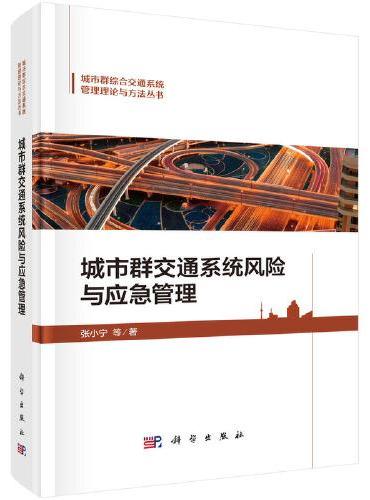新書推薦:

《
断头王后:玛丽·安托奈特传(裸脊锁线版,德语直译新译本,内文附多张传主彩插)
》
售價:HK$
61.6

《
东南亚华人宗祠建筑艺术研究
》
售價:HK$
97.9

《
甲骨文字综理表
》
售價:HK$
217.8

《
礼法融通:中国传统离婚制度及观念
》
售價:HK$
86.9

《
城市群交通系统风险与应急管理
》
售價:HK$
204.6

《
华南主要观赏树木图鉴
》
售價:HK$
173.8

《
努斯:希腊罗马哲学研究(第8辑)--宇宙与自然:古希腊自然哲学诸面向
》
售價:HK$
85.8

《
沉疴:大明最后二十年的十三张面孔
》
售價:HK$
52.8
|
| 內容簡介: |
|
《半导体物理性能手册第1卷英文版》系Springer手册精选原版系列。《半导体物理性能手册第1卷英文版》主要包括Diamond(C)、Silicon(Si)、Germanium(C)、Gray Tin(a—Sn)、Cubic Silicon Carbide(3C—SiC)、Hexagonal Silicon Carbide(2H—,4H—,6H—SiC,etc.)、Rhombohedral Silicon Carbide(15R—,21R—,24R—SiC,etc.)等内容。
|
| 目錄:
|
Preface
Acknowledgments
Contents of Other Volumes
1 Diamond (C)
1.1 Structural Properties
1.1.1 Ionicity
1.1.2 Elemental Isotopic Abundance and Molecular Weight
1.1.3 Crystal Structure and Space Group
1.1.4 Lattice Constant and Its Related Parameters
1.1.5 Structural Phase Transition
1.1.6 Cleavage Plane
1.2 Thermal Properties
1.2.1 Melting Point and Its Related Parameters
1.2.2 Specific Heat
1.2.3 Debye Temperature
1.2.4 Thermal Expansion Coefficient
1.2.5 Thermal Conductivity and Diffusivity
1.3 Elastic Properties
1.3.1 Elastic Constant
1.3.2 Third—Order Elastic Constant
1.3.3 Young''s Modulus, Poisson''s Ratio, and Similar
1.3.4 Microhardness
1.3.5 Sound Velocity
1.4 Phonons and Lattice Vibronic Properties
1.4.1 Phonon Dispersion Relation
1.4.2 Phonon Frequency
1.4.3 Mode Gruneisen Parameter
1.4.4 Phonon Deformation Potential
1.5 Collective Effects and Related Properties
1.5.1 Piezoelectric Constant
1.5.2 Frohlich Coupling Constant
1.6 Energy—Band Structure: Energy—Band Gaps
1.6.1 Basic Properties
1.6.2 E0—Gap Region
1.6.3 Higher—Lying Direct Gap
1.6.4 Lowest Indirect Gap
1.6.5 Conduction—Valley Energy Separation
1.6.6 Direct—Indirect—Gap Transition Pressure
1.7 Energy—Band Structure: Electron and Hole Effective Masses
1.7.1 Electron Effective Mass: Γ Valley
1.7.2 Electron Effective Mass: Satellite Valley
1.7.3 Hole Effective Mass
1.8 Electronic Deformation Potential
1.8.1 Intravalley Deformation Potential: Γ Point
1.8.2 Intravalley Deformation Potential: High—Symmetry Points
1.8.3 Intervalley Deformation Potential
1.9 Electron Affinity and Schottky Barrier Height
1.9.1 Electron Affinity
1.9.2 Schottky Barrier Height
1.10 Optical Properties
1.10.1 Summary of Optical Dispersion Relations
1.10.2 The Reststrahlen Region
1.10.3 At or Near the Fundamental Absorption Edge
1.10.4 The Interband Transition Region
1.10.5 Free—Carrier Absorption and Related Phenomena
1.11 Elastooptic, Electrooptic, and Nonlinear Optical Properties
1.11.1 Elastooptic Effect
1.11.2 Linear Electrooptic Constant
1.11.3 Quadratic Electrooptic Constant
1.11.4 Franz—Keldysh Effect
1.11.5 Nonlinear Optical Constant
1.12 Carrier Transport Properties
1.12.1 Low—Field Mobility: Electrons
1.12.2 Low—Field Mobility: Holes
1.12.3 High—Field Transport: Electrons
1.12.4 High—Field Transport: Holes
1.12.5 Minority—Carrier Transport: Electrons in ρ—Type Materials
1.12.6 Minority—Carrier Transport: Holes in n—Type Materials
1.12.7 Impact Ionization Coefficient
2 Silicon (Si)
2.1 Structural Properties
2.1.1 Ionicity
2.1.2 Elemental Isotopic Abundance and Molecular Weight
2.1.3 Crystal Structure and Space Group
2.1.4 Lattice Constant and Its Related Parameters
2.1.5 Structural Phase Transition
2.1.6 Cleavage Plane
2.2 Thermal Properties
2.2.1 Melting Point and Its Related Parameters
2.2.2 Specific Heat
2.2.3 Debye Temperature
2.2.4 Thermal Expansion Coefficient
2.2.5 Thermal Conductivity and Diffusivity
2.3 Elastic Properties
2.3.1 Elastic Constant
2.3.2 Third—Order Elastic Constant
2.3.3 Young''s Modulus, Poisson''s Ratio, and Similar
2.3.4 Microhardness
2.3.5 Sound Velocity
2.4 Phonons and Lattice Vibronic Properties
2.4.1 Phonon Dispersion Relation
2.4.2 Phonon Frequency
2.4.3 Mode Gruneisen Parameter
2.4.4 Phonon Deformation Potential
2.5 Collective Effects and Related Properties
2.5.1 Piezoelectric Constant
2.5.2 Frohlich Coupling Constant
2.6 Energy—Band Structure: Energy—Band Gaps
2.6.1 Basic Properties
2.6.2 E0—Gap Region
2.6.3 Higher—Lying Direct Gap
2.6.4 Lowest Indirect Gap
2.6.5 Conduction—Valley Energy Separation
2.6.6 Direct—Indirect—Gap Transition Pressure
2.7 Energy—Band Structure: Electron and Hole Effective Masses
2.7.1 Electron Effective Mass: Γ Valley
2.7.2 Electron Effective Mass: Satellite Valley
2.7.3 Hole Effective Mass
2.8 Electronic Deformation Potential
2.8.1 Intravalley Deformation Potential: Γ Point
2.8.2 Intravalley Deformation Potential: High—Symmetry Points
2.8.3 Intervalley Deformation Potential
2.9 Electron Affinity and Schottky Barrier Height
2.9.1 Electron Affinity
2.9.2 Schottky Barrier Height
2.10 Optical Properties
2.10.1 Summary of Optical Dispersion Relations
2.10.2 The Reststrahlen Region
2.10.3 At or Near the Fundamental Absorption Edge
2.10.4 The Interband Transition Region
2.10.5 Free—Carrier Absorption and Related Phenomena
2.11 Elastooptic, Electrooptic, and Nonlinear Optical Properties
2.11.1 Elastooptic Effect
2.11.2 Linear Electrooptic Constant
2.11.3 Quadratic Electrooptic Constant
2.11.4 Franz—Keldysh Effect
2.11.5 Nonlinear Optical Constant
2.12 Carrier Transport Properties
2.12.1 Low—Field Mobility: Electrons
2.12.2 Low—Field Mobility: Holes
2.12.3 High—Field Transport: Electrons
2.12.4 High—Field Transport: Holes
2.12.5 Minority—Carrier Transport: Electrons in p—Type Materials
2.12.6 Minority—Carrier Transport: Holes in n—Type Materials
2.12.7 Impact Ionization Coefficient
3 Germanium (C)
3.1 Structural Properties
3.1.1 Ionicity
3.1.2 Elemental Isotopic Abundance and Molecular Weight
3.1.3 Crystal Structure and Space Group
3.1.4 Lattice Constant and Its Related Parameters
3.1.5 Structural Phase Transition
3.1.6 Cleavage Plane
3.2 Thermal Properties
3.2.1 Melting Point and Its Related Parameters
3.2.2 Specific Heat
3.2.3 Debye Temperature
3.2.4 Thermal Expansion Coefficient
3.2.5 Thermal Conductivity and Diffusivity
3.3 Elastic Properties
3.3,1 Elastic Constant
3.3.2 Third—Order Elastic Constant
3.3.3 Young''s Modulus, Poisson''s Ratio, and Similar
3.3.4 Microhardness
3.3.5 Sound Velocity
3.4 Phonons and Lattice Vibronic Properties
3.4.1 Phonon Dispersion Relation
3.4.2 Phonon Frequency
3.4.3 Mode Gruneisen Parameter
3.4.4 Phonon Deformation Potential
3.5 Collective Effects and Related Properties
3.5.1 Piezoelectric Constant
3.5.2 Frohlich Coupling Constant
3.6 Energy—Band Structure: Energy—Band Gaps
3.6.1 Basic Properties
3.6.2 Eo—Gap Region
3.6.3 Higher—Lying Direct Gap
3.6.4 Lowest Indirect Gap
3.6.5 Conduction—Valley Energy Separation
3.6.6 Direct—Indirect—Gap Transition Pressure
3.7 Energy—Band Structure: Electron and Hole Effective Masses
3.7.1 Electron Effective Mass: F Valiey
3.7.2 Electron Effective Mass: Satellite Valley
3.7.3 Hole Effective Mass
3.8 Electronic Deformation Potential
3.8.1 Intravalley Deformation Potential: Γ Point
3.8.2 Intravalley Deformation Potential: High—Symmetry Points
3.8.3 Intervalley Deformation Potential
3.9 Electron Affinity and Schottky Barrier Height
3.9.1 Electron Affinity
3.9.2 Schottky Barrier Height
3.10 Optical Properties
3.10.1 Summary of Optical Dispersion Relations
3.10.2 The Reststrahlen Region
3.10.3 At or Near the Fundamental Absorption Edge
3.10.4 The Interband Transition Region
3.10.5 Free—Carrier Absorption and Related Phenomena
3.11 Elastooptic, Electrooptic, and Nonlinear Optical Properties
3.11.1 Elastooptic Effect
3.11.2 Linear Electrooptic Constant
3.11.3 Quadratic Electrooptic Constant
3.11.4 Franz—Keldysh Effect
3.11.5 Nonlinear Optical Constant
3.12 Carrier Transport Properties
3.12.1 Low—Field Mobility: Electrons
3.12.2 Low—Field Mobility: Holes
3.12.3 High—Field Transport: Electrons
3.12.4 High—Field Transport: Holes
3.12.5 Minority—Carrier Transport: Electrons in p—Type Materials
3.12.6 Minority—Carrier Transport: Holes in n—Type Materials
3.12.7 Impact Ionization Coefficient
4 Gray Tin (a—Sn)
4.1 Structural Properties
4.1.1 lonicity
4.1.2 Elemental Isotopic Abundance and Molecular Weight
4.1.3 Crystal Structure and Space Group
4.1.4 Lattice Constant and Its Related Parameters
4.1.5 Structural Phase Transition
4.1.6 Cleavage Plane
4.2 Thermal Properties
4.2.1 Melting Point and Its Related Parameters
4.2.2 Specific Heat
4.2.3 Debye Temperature
4.2.4 Thermal Expansion Coefficient
4.2.5 Thermal Conductivity and Diffusivity
4.3 Elastic Properties
4.3.1 Elastic Constant
4.3.2 Third—Order Elastic Constant
4.3.3 Young''s Modulus, Poisson''s Ratio, and Similar
4.3.4 Microhardness
4.3.5 Sound Velocity
4.4 Phonons and Lattice Vibronic Properties
4.4.1 Phonon Dispersion Relation
4.4.2 Phonon Frequency
4.4.3 Mode Gruneisen Parameter
4.4.4 Phonon Deformation Potential
4.5 Collective Effects and Related Properties
4.5.1 Piezoelectric Constant
4.5.2 Frohlich Coupling Constant
4.6 Energy—Band Structure: Energy—Band Gaps
4.6.1 Basic Properties
4.6.2 Eo—Gap Region
4.6.3 Higher—Lying Direct Gap
4.6.4 Lowest Indirect Gap
4.6.5 Conduction—Valley Energy Separation
4.6.6 Direct—Indirect—Gap Transition Pressure
4.7 Energy—Band Structure: Electron and Hole Effective Masses
4.7.1 Electron Effective Mass: Γ Valley
4.7.2 Electron Effective Mass: Satellite Valley
4.7.3 Hole Effective Mass
4.8 Electronic Deformation Potential
4.8.1 Intravalley Deformation Potential: Γ Point
4.8.2 Intravalley Deformation Potential: High—Symmetry Points
4.8.3 Intervalley Deformation Potential
4.9 Electron Affinity and Schottky Barrier Height
4.9.1 Electron Affinity
4.9.2 Schottky Barrier Height
4.10 Optical Properties
4.10.1 Summary of Optical Dispersion Relations
4.10.2 The Reststrahlen Region
4.10.3 At or Near the Fundamental Absorption Edge
4.10.4 The Interband Transition Region
4.10.5 Free—Carrier Absorption and Related Phenomena
4.11 Elastooptic, Electrooptic, and Nonlinear Optical Properties
4.11.1 Elastooptic Effect
4.11.2 Linear Electrooptic Constant
4.11.3 Quadratic Electrooptic Constant
4.11.4 Franz—Keldysh Effect
4.11.5 Nonlinear Optical Constant
4.12 Carrier Transport Properties
4.12.1 Low—Field Mobility: Electrons
4.12.2 Low—Field Mobility: Holes
4.12.3 High—Field Transport: Electrons
4.12.4 High—Field Transport: Holes
4.12.5 Minority—Carrier Transport: Electrons in p—Type Materials
4.12.6 Minority—Carrier Transport: Holes in n—Type Materials
4.12.7 Impact Ionization Coefficient
……
5 Cubic Silicon Carbide (3C—SiC)
6 Hexagonal Silicon Carbide (2H—, 4H—, 6H—SiC, etc.)
7 Rhombohedral Silicon Carbide (15R—, 21R—, 24R—SiC, etc.)
|
|









